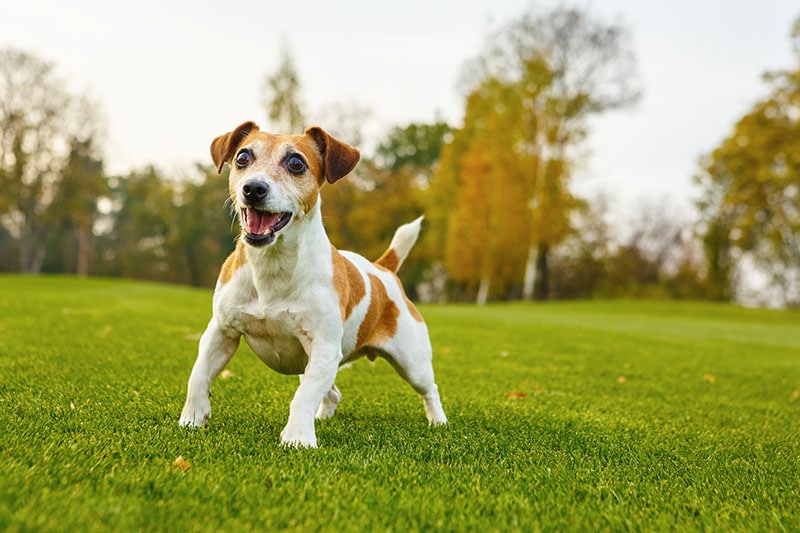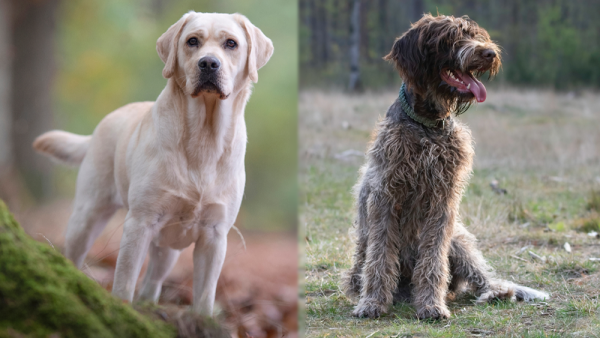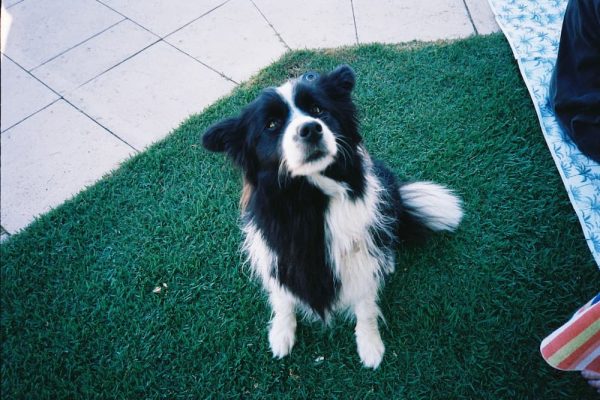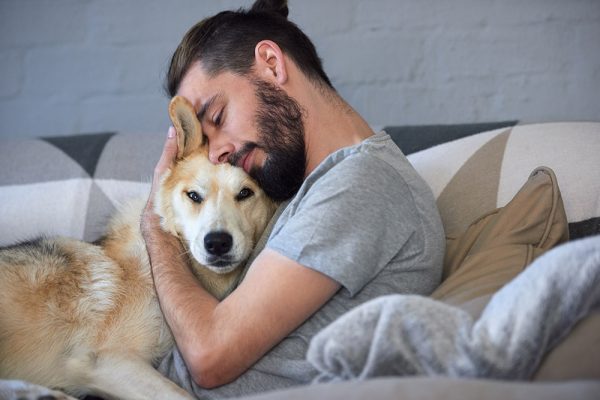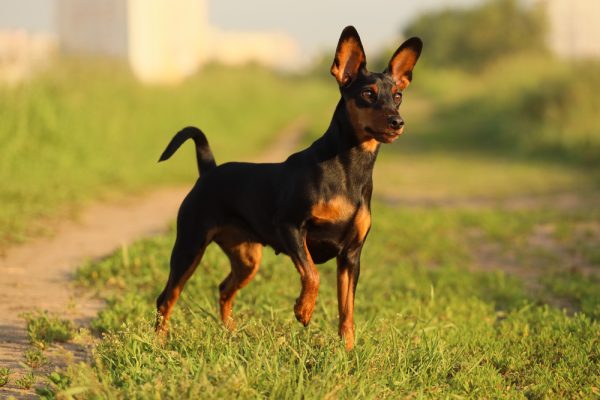If you’re trying to bring a cat into your home and have a hyper dog, introducing them can feel like an impossible task. Although it’s certainly a challenge, if you know what you’re doing, there’s no reason your hyper dog and your cat can’t at least have an amicable relationship.
Below, we’ve highlighted some of the most important tips for ensuring your cat and dog get to know each other and can coexist in the same home!

The 12 Tips to Introduce a Hyper Dog to a Cat
1. Give the Cat a Quiet Space
If your dog is hyper, they can frighten your cat. Giving them a space where they can get away from it all and relax is a big part of ensuring a successful long-term relationship between the two pets.
This isn’t something that needs to happen just for the introduction process; you need to set aside this space for your cat for the foreseeable future. It might be a bit challenging trying to find a way to keep the dog out but let the cat in, but it’s worth the extra effort.
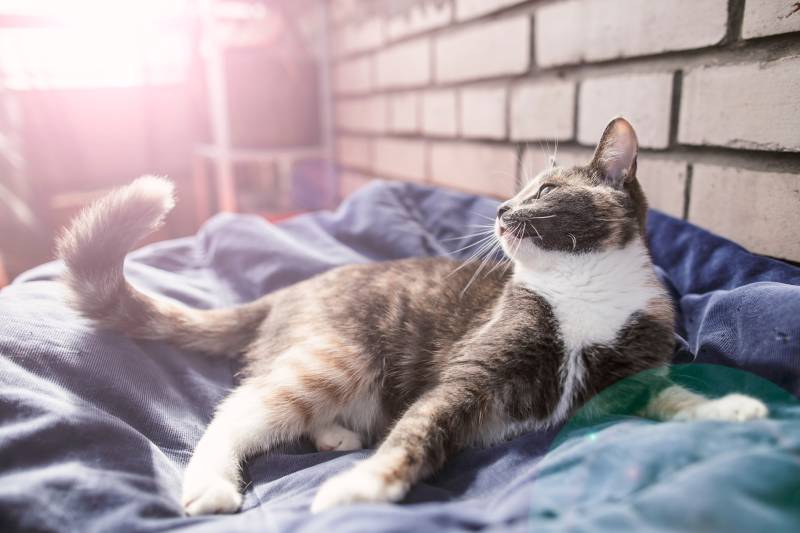
2. Keep Them Apart at First
Introducing your cat to your dog is a process, so don’t just throw them in the same room together and hope for the best. Start by keeping them away and slowly introducing them to each other using baby steps.
Introduce them to each other’s scents, get them used to hearing each other, let them see each other a few times, and then put them in the same room once the newness wears off. It’s a long process, but you should have a successful integration if you follow it.
3. Teach Basic Commands
Just because your pup is hyper doesn’t mean you can’t train them. You should be able to use basic commands with them. Commands like stop, sit, and come will go a long way in ensuring your pup doesn’t get out of control when you’re introducing them to your cat.
Training sessions that last 15 to 20 minutes each day will have your dog listening to you in no time as long as you continue to meet all of their daily exercise requirements.
If you need guidance on training your dog, we suggest you speak to a behavior specialist or a vet.
If you need to speak with a vet but can't get to one, head over to PangoVet. It's our online service where you can talk to a vet online and get the advice you need for your pet — all at an affordable price!

4. Start Slow
If you have a hyper dog, you can’t expect the integration process between them and the cat to go quickly. Don’t rush the process; otherwise, you’ll overexcite your dog and terrify your cat.
Once there’s mistrust between the cat and the dog, it can be hard to overcome, so take your time and do it right the first time, or you’ll be signing up for more work.
5. Exercise Your Dog First
You don’t want to have a hyper dog with a ton of pent-up energy meeting your cat for the first time. Instead, try to wear them out a bit beforehand. This should reduce their overall energy levels and help ensure a smooth introduction. A long trip to the dog park, a run, or plenty of time outside running around can help wear them out a bit before the introduction.
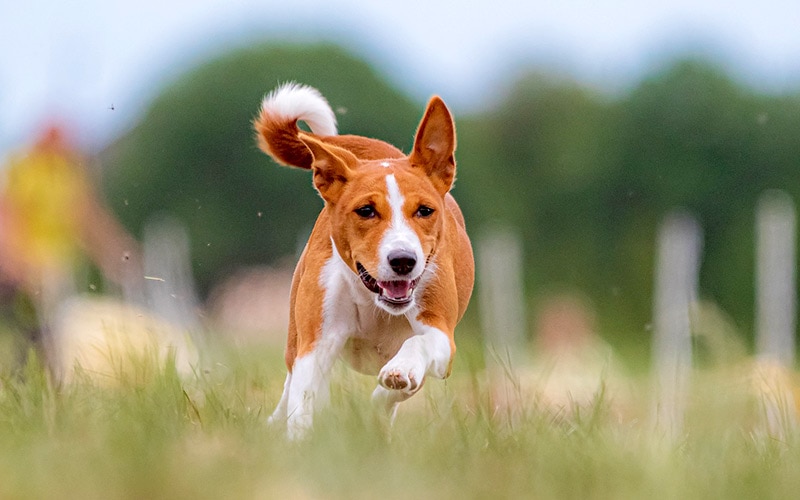
6. Use a Crate
If the goal is to get your cat comfortable around the dog before the dog overwhelms the cat, keeping your pup in a crate for the first few introductions can help. Your cat will be curious about your dog and want to check them out.
But since your dog is stuck in the crate, they can’t overwhelm your cat during this process. After a few introductions with your dog in the crate, the curiosity can wear off for both animals and lead to a calmer introduction.
7. Supervise Them
You’ll need to supervise your dog and cat’s interactions for the first few weeks to ensure nothing gets out of hand. This means constantly watching your dog and your cat whenever they’re together and ensuring they can’t get together when you’re not there to supervise.
Once your cat and dog stop caring so much about each other and consistently leave each other alone, you can take a step back and not supervise every interaction. However, if your dog continues to stay hyper-focused on the cat, you must continue to supervise their interactions.

8. Keep Feeding Times Separate
Both cats and dogs can be territorial about their food, and it’s one of the most common causes of animosity between the two pets. It’s not uncommon for one pet to eat out of the other’s bowl, but it can lead to problems between them.
It’s easy to avoid, but it might require scheduled feedings for both animals. Keep the other pet away during their mealtimes, and it’s one less area that can create problems.
9. Use a Leash
When you’re introducing your dog and your cat, you need to remain in complete control of both animals. One of the easiest ways to do this is to put your dog on a leash. This will ensure your cat can get away when needed and guarantee that it won’t devolve into a game of chasing the cat.
It also allows you to end the interaction if things get out of hand. It’s more of a precaution, but it’s certainly worth taking.
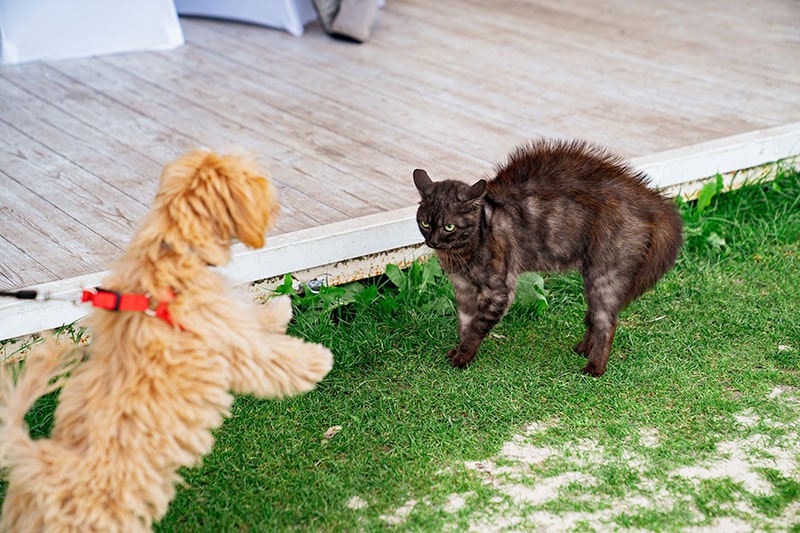
10. Introduce Scents
When your cat and dog live in the same home but in different rooms, you need to introduce them to each other’s scent. One easy way to do this is to simply move them to different rooms after the other animal has been there for a while.
This will leave plenty of their scent for the other animal to check out. It will get them comfortable and curious about the other animal without recognizing them as a threat.
11. Positive Reinforcement
When your dog behaves properly around the cat, you should praise them. This will encourage the good behavior you want to see and show them how you expect them to act.
It’s important to remember that your dog isn’t acting that way to try and create problems for you; they’re just excited, and they don’t know what you expect from them yet!

12. Stay Consistent
Consistency is key whenever you’re trying to do anything with either of your pets. This means following all the necessary steps during the integration process and ensuring you take time out of each day to stick with it.
If you don’t take the time to stay consistent, the novelty will never wear off for either your dog or your cat, and you won’t be able to introduce the animals to each other successfully.

In Summary
While introducing a hyper dog to a cat isn’t always the easiest thing to do, with the proper steps, consistency, and patience, there’s no reason you can’t. Just remember to consistently supervise them for a while ever after they meet each other. That way, something doesn’t happen while you’re not looking!
Featured Image Credit: Iryna Kalamurza, Shutterstock
